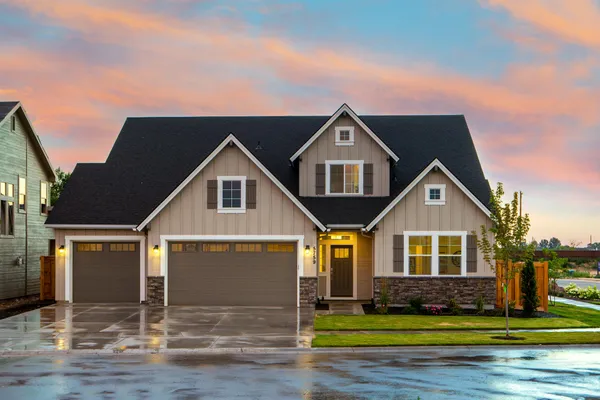The phrase “location, location, location” is a cliché for a reason. Yet in 2025, it’s becoming less about glittering city centers and more about the growing gravitational pull of the suburbs. Investors are waking up to the idea that value isn’t always tied to a postcode with a skyline view.

These days, a home with a driveway, access to good schools, and a thirty-minute commute to the office is not just desirable—it’s in demand.
And that shift? It’s not just anecdotal. It’s reshaping how property investment works on a structural level.
Why the Suburbs Are Winning Attention
Let’s be clear: urban centers still have their draw. The buzz, the business hubs, the lifestyle. But for property investors looking for growth and yield, inner cities are becoming increasingly expensive and saturated. In contrast, suburban areas offer lower entry prices, more space, and less competition for investors.
Suburban appeal isn’t driven solely by aesthetics or affordability, either. Infrastructure improvements—like expanded train lines and smart road planning—have quietly made previously out-of-reach neighbourhoods newly viable. And post-pandemic trends (yes, that shadow still lingers) have recalibrated what people value in a living space. Flexibility, peace, and the option to work remotely, at least part of the time, have helped reframe the investment logic.
Families are leaving city apartments behind for houses with gardens. Young professionals, previously loyal to inner-city flats, are discovering the joys of more space and a slightly slower pace. That movement, that ongoing migration—it's creating fresh demand, and demand is where smart property investment begins.
Suburbs As Safe Bets: A New Kind of Portfolio Strategy
Here’s where things get granular. Not all suburbs are created equal. The most compelling returns are found in areas with more than just lower prices. Investors are zeroing in on regions with regeneration projects, improved transport links, and a consistent rental base.
Nowhere is this more evident than in the north of England, particularly in the landlord-favoured Manchester suburbs. These areas are gaining traction thanks to a cocktail of affordability, solid rental yields, and long-term urban planning that favours growth. Some of these districts have become near case studies in what happens when public infrastructure meets private opportunity.
Crucially, these are not speculative plays. We’re talking about locations that already have waiting lists for rental homes and tenants willing to pay a premium for semi-detached calm over studio convenience. For landlords, that’s less vacancy risk and more stability—a rare combination in today’s market.
Shifting Priorities: Renters Want More Than Just Proximity
Another driving force behind suburban demand? Renter expectations have shifted. Yes, commute times still matter, but they’re no longer the sole dealbreaker. People now place weight on access to green space, school catchments, noise levels, and yes—even broadband speeds.
The idea of lifestyle has widened. Suburbs that once felt disconnected or even dull are now attractive because they offer a more rounded way of living. That reframing is nudging investors to consider long-term tenant satisfaction, not just short-term margins.
It’s a small but crucial mindset change: focusing not only on what the market is paying, but what it wants to pay for.
Are Cities Losing Out?
Not quite. Cities are adapting. You’re seeing more build-to-rent developments tailored for longer tenancies, and there’s a visible shift in how urban space is being repurposed. But that doesn’t negate the fact that competition is fiercer, costs are higher, and regulatory pressures are growing in many city centers.
It makes sense, then, that many investors are using suburban purchases to balance out their urban portfolios. Lower capital requirements combined with rising demand create a cushion of sorts—less volatility, more predictability.
That isn’t to say all suburbs are goldmines. Overdevelopment is always a risk, and the appeal of a quieter postcode can fade fast without proper amenities. But generally, the suburbs offer investors something increasingly hard to find in urban markets: breathing room.
So, What Comes Next?
Expect the lines to blur further. With remote work still playing a major role in many industries, and local councils investing in town-centre revivals, suburbs are no longer a middle ground. They are, in many cases, the main stage. Investors who adapt to this shift—who understand that today’s ideal tenant isn’t necessarily where they were five years ago—are better positioned to ride the wave.
That means doing the legwork. Looking beyond the headline price and investigating school ratings, planning permissions, transport projects, and demographic changes. It also means thinking about the longevity of a suburb’s appeal. Is it part of a wider economic zone? Are young families settling there, or is it a retirement belt in disguise?
Smart property investment in 2025 isn’t about chasing the biggest tower or trendiest café. It’s about reading the quieter signals: where people are putting down roots, not just passing through.
Final Thought
Suburban growth is more than a phase—it’s a recalibration of what both renters and investors value. For those willing to dig into the nuance, to research deeply and avoid the trap of old assumptions, the opportunities are real. Less flash, perhaps—but often, far more substance.
- Traveling Smarter with Kids: How Tech is Changing Family Adventures
- Ideas to Edible Glitter: Baking, Crafting, and Beyond
- Sparkle and Shine: How to Source Quality Glitter for Your Store
- What Google Doesn’t Tell You About Finding the Right Neighborhood in Dallas
- Tips for Apartment Living: What Every First-Time Renter Should Know







